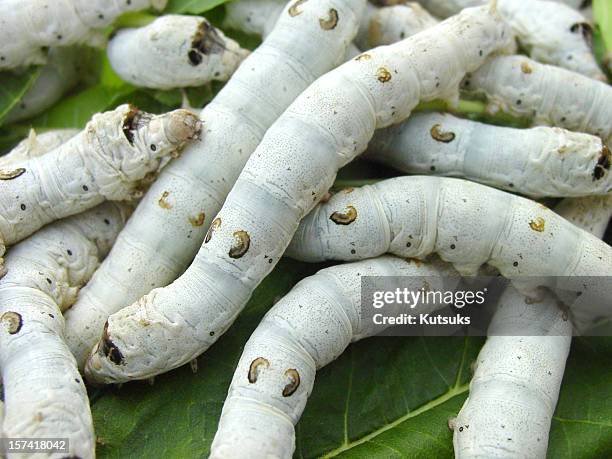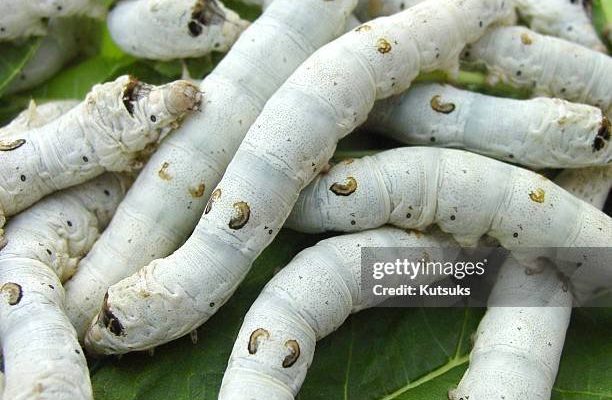
At their core, silkworms are the larvae of the *Bombyx mori* moth. These little guys transform from tiny eggs into voracious eaters, munching on mulberry leaves almost constantly. Imagine a caterpillar that’s a superstar in the world of fabric-making. You might be wondering how something so small can make silk, a material that’s synonymous with luxury and elegance. Let’s dive into the realm of silkworms and uncover their life cycle, why they’re important, and some of the challenges they face today.
The Life Cycle of Silkworms
Silkworms undergo a fascinating transformation, known as *metamorphosis*. It all starts when a female moth lays her eggs, often numbering in the hundreds. These eggs are incredibly tiny—smaller than a pinhead! After about ten days, they hatch into larvae, and that’s when the real action begins. Silkworm larvae are known for their rapid growth, and they eat a lot—roughly 3,000 times their body weight in just a few weeks.
Once they’ve chewed through enough mulberry leaves and reached their full size, about 2 to 3 inches long, it’s time for them to spin silk. They do this by releasing a liquid silk protein that hardens upon contact with air. Picture a little worker turning into a thread-spinning machine! Each silkworm can produce a continuous strand of silk that can be over a mile long. This whole spinning process lasts about 2-3 days, after which they enter the pupal stage, encased in their silk cocoons.
Silkworms aren’t just cute, squishy creatures; they are vital to the textile industry. The silk produced from their cocoons has been prized for centuries for its luxurious feel and luster. Historically, silk was a sign of wealth and status, and today, it’s still used in high-end fashion and various textiles. Plus, the method of harvesting silk has been refined over generations, making this industry a fascinating blend of art and science.
But beyond fashion, silkworms also contribute significantly to agriculture. Their production processes support countless livelihoods, especially in countries like China, India, and Uzbekistan, where sericulture (silk farming) is prevalent. In fact, did you know that there are over 7 million sericulturists in India alone? That’s a significant number of people whose lives are intertwined with these little critters!
Common Uses of Silkworms
You might be surprised to learn that silkworms have a variety of uses beyond just producing silk. Here are a few interesting examples:
- Silk Production: The most well-known use, of course, is silk fabric. It’s used for clothing, bedding, and accessories.
- Traditional Medicine: In some cultures, silkworms and their cocoons are utilized in traditional remedies for various ailments.
- Animal Feed: Silkworm larvae are also a popular source of protein in livestock feed, as they are rich in nutrients.
- Research: Silkworms are studied for their unique biology and potential applications in genetic research and biotechnology.
Each of these uses highlights the versatility of silkworms and their importance in different areas of human activity.
Challenges Facing Silkworms Today
Despite their significance, silkworms face various challenges that can impact their populations and the industries that rely on them. One major concern is the increase in synthetic fabrics. As the demand for cheap and easy-to-produce materials grows, traditional silk production can struggle to compete. People sometimes overlook the craftsmanship and time involved in making silk, leading to fewer consumers choosing natural over synthetic.
Another challenge is climate change. Silkworms thrive in specific weather conditions, and changing temperatures and patterns can disrupt their life cycle. Plus, pests and diseases can wipe out entire crops, further threatening the silk industry. Farmers are constantly seeking ways to adapt and protect their silkworms, but it’s an ongoing struggle.
How to Get Involved with Silkworms
If you’re intrigued by silkworms and want to learn more or even get involved, there are several ways to do so. Here are some ideas to explore:
- Local Workshops: Check out local museums or community centers for workshops on sericulture or weaving.
- Online Communities: Join forums or social media groups where enthusiasts share their experiences and knowledge about silkworms.
- Gardening: Try raising silkworms at home. All you need are some mulberry leaves and the right environment!
- Volunteering: Look for opportunities with local farms or organizations focused on traditional textile production.
These activities not only increase your knowledge but also connect you with others who share your interest in these remarkable creatures.
The Future of Silkworms
As we move into a more eco-conscious society, the future of silkworms can be bright, especially with innovations in sustainable farming practices. Researchers are exploring ways to enhance sericulture without harming the environment. For example, they’re working on developing hybrid silkworm strains that are more resilient against diseases and climate changes. This could help ensure that the silk we love continues to be produced in a way that’s respectful of our planet.
More consumers are also becoming aware of the benefits of choosing natural fibers over synthetics, which could lead to a resurgence in silk’s popularity. As awareness about sustainable fashion grows, silkworms could see a positive turn in demand, helping farmers thrive and keeping traditions alive.
In conclusion, silkworms are more than just small, squishy larvae. They are fascinating creatures with a rich history and a crucial role in our world. Whether you’re drawn to their silk, their role in agriculture, or their potential for sustainable practices, understanding silkworms can deepen your appreciation for the delicate threads that weave through our lives.

